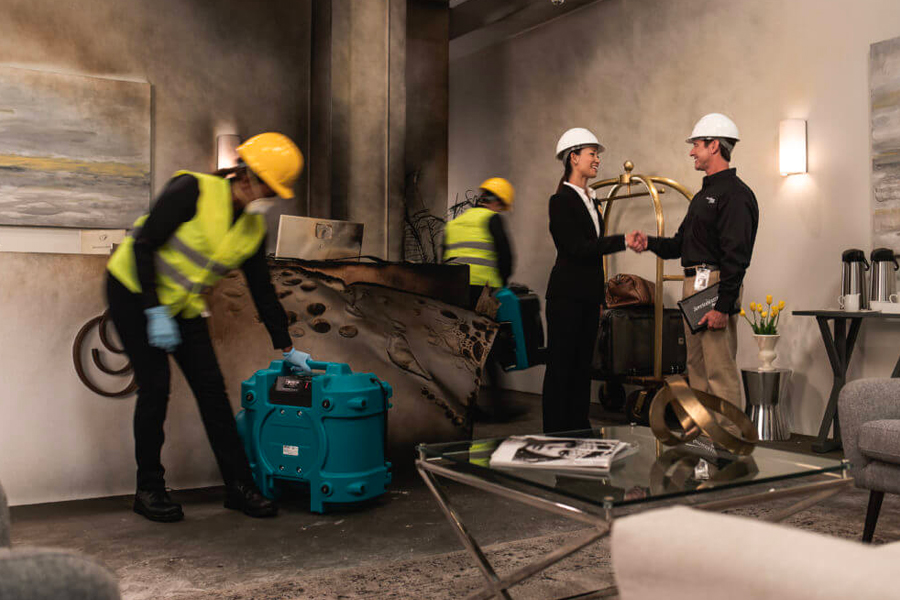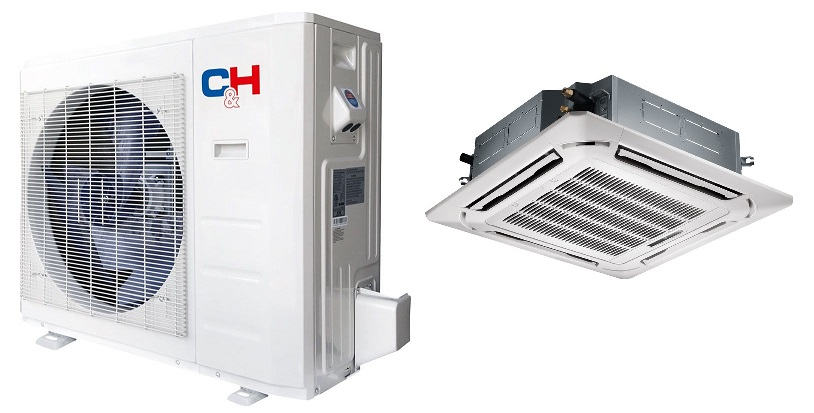Fire and smoke damage encompass various destructive elements that impact properties. Fire, with its intense heat and flames, can ravage structures, causing structural weakening and material deterioration. Smoke, consisting of particles and chemicals, permeates porous materials, leaving behind stubborn odors and residues that can be challenging to remove completely. Understanding these damaging elements is crucial in comprehending the extensive restoration needs following a fire incident.
Among the crucial aspects of fire and smoke damage restoration is prompt response and professional expertise. Save the Day Restoration stands out as a leading restoration company in Anaheim, CA, ensuring prompt and reliable solutions for fire damage restoration in Santa Ana, CA, and offering the best damage restoration services in Irvine, CA. Their expertise extends to quality water damage restoration in Long Beach, CA, guaranteeing comprehensive support in times of crisis.
Key Factors Behind Damage Severity
Rapid Fire Spread Factors
During a fire, various elements can contribute to its rapid spread. Factors such as flammable materials, airflow patterns within a structure, and the intensity of the initial spark significantly impact the speed at which flames propagate. Rapid fire spread can escalate the extent of damage within minutes, necessitating swift intervention to contain and minimize the aftermath.
Varied Smoke Types & Their Effects
Smoke resulting from a fire is not uniform; it comprises various types, each carrying distinct chemical compositions. Different materials burned during a fire produce varying smoke types, ranging from dry to oily or protein-based. Understanding these smoke varieties is crucial as they exhibit diverse properties, causing different forms of damage to surfaces, materials, and air quality. This understanding influences the restoration approach adopted.
Structural and Material Vulnerabilities
The structural integrity of a building and the materials it comprises significantly affect the extent of damage inflicted by fire and smoke. While certain materials might resist fire to some extent, others could be more susceptible to damage or quicker deterioration. Assessing these vulnerabilities is essential in determining the scope and intensity of the restoration process required to restore the property.
Importance of Swift Restoration Services
Time-Sensitive Restoration Needs
Time is of the essence in fire and smoke damage restoration. Delay in initiating restoration procedures can exacerbate the damage, making it more challenging and costly to rectify. Swift restoration services ensure immediate assessment, mitigation, and commencement of restoration procedures to prevent further deterioration.
Mitigating Further Property Deterioration
Beyond the initial fire damage, prolonged exposure to smoke residue and lingering effects can worsen the property’s condition. Swift restoration interventions aim to halt the progression of damage, preventing secondary issues such as corrosion, soot deposition, and structural weakening, thereby minimizing overall restoration costs.
Preventing Lingering Smoke Residue Effects
Smoke residues, if left unattended, can persist within a property long after a fire has been extinguished. These residues can permeate surfaces, materials, and HVAC systems, causing persistent odors, discoloration, and health hazards. Prompt restoration services aim to eliminate these lingering effects, ensuring a safer and healthier environment.
Health and Safety Concerns Post-Fire
Air Quality & Health Risks
Post-fire, air quality significantly deteriorates due to the release of harmful chemicals and particles from burned materials. Inhalation of smoke residue and airborne contaminants poses severe health risks, especially to individuals with respiratory issues. Restoring air quality through comprehensive cleaning and decontamination is crucial for occupants’ well-being.
Structural Integrity & Safety Hazards
A fire compromises a building’s structural integrity, weakening its framework and stability. This structural damage poses safety hazards to occupants and restoration professionals alike. Identifying and addressing compromised structural elements is imperative to prevent potential accidents or collapses during restoration.
Hazardous Residue Cleanup Needs
The residue left behind after a fire often contains hazardous substances such as carbon monoxide, soot, and other toxic byproducts. Thorough and systematic cleanup and disposal of these residues are essential to eliminate health risks and restore a safe living or working environment for occupants.
Insurance and Financial Implications
Insurance Coverage and Claims
When facing fire and smoke damage, understanding your insurance coverage is paramount. Not all policies cover the full extent of damage, and nuances in coverage can significantly impact your restoration process. It’s crucial to review your policy details promptly after an incident and consult with your insurance provider to comprehend the scope of coverage. Additionally, documenting the damage comprehensively through photos and detailed lists will facilitate a smoother claims process, aiding in potential disputes or misunderstandings.
Costly Delay Consequences
Delaying fire and smoke damage restoration can result in escalated costs and complexities. Postponing restoration can allow soot, smoke residue, and water damage to permeate further into structures, exacerbating the destruction and complicating the restoration process. Moreover, prolonged exposure to smoke residue can cause surfaces to corrode, leading to irreversible damage that demands more extensive and expensive repairs. Every day counts in mitigating these effects and preventing additional expenses.
Restoration as Cost-Efficient Strategy
Contrary to misconceptions, prompt restoration is often more cost-efficient than delayed action. Timely intervention by professional restoration services minimizes the spread of damage, reducing the overall costs of repairs and replacements. Addressing the damage promptly not only limits the destruction but also prevents secondary issues that might arise due to prolonged exposure. In essence, investing in swift restoration services is an investment in cost savings and efficient recovery.
Specialized Expertise and Equipment
Professional Restoration Techniques
Expertise matters significantly in fire and smoke damage restoration. Professionals are equipped with in-depth knowledge and hands-on experience, enabling them to employ effective restoration techniques tailored to different damage scenarios. They understand the intricacies of smoke behavior and the varied effects on diverse materials, allowing them to employ suitable restoration methods efficiently.
Specialized Tools for Damage Assessment
Accurate damage assessment is pivotal in determining the extent of restoration needed. Restoration specialists utilize advanced tools and technologies for precise damage evaluation. Thermal cameras, moisture meters, and air quality testing equipment aid in identifying hidden damage, enabling a comprehensive restoration plan that addresses all affected areas effectively.
Advanced Cleaning and Restoration Technologies
Cutting-edge technologies play a crucial role in efficient restoration. Advanced cleaning methods, such as dry ice blasting or ozone treatments, effectively remove smoke residues without causing further damage to surfaces. Additionally, specialized equipment for water extraction, drying, and dehumidification ensures thorough restoration, preventing mold growth and structural issues.
Restoration Process and Timelines
Step-by-Step Restoration Procedure
A systematic approach is fundamental in fire and smoke damage restoration. Professionals follow a structured restoration process encompassing damage assessment, mitigation, cleaning, and restoration. Each step is meticulously executed, ensuring comprehensive restoration while minimizing disruptions to your property and daily life.
Timelines for Effective Restoration
The restoration timeline varies based on the severity of damage and the property size. However, prompt initiation of restoration significantly impacts the timeline, preventing further deterioration and expediting the recovery process. Timely intervention ensures a more efficient restoration, minimizing downtime and enabling the swift return to a habitable and safe environment.
Importance of Methodical Approach
Adopting a methodical approach to restoration ensures thoroughness and quality in the process. Rushed or haphazard restoration attempts can lead to overlooked damage and inadequate repairs, resulting in lingering issues. A methodical and systematic approach, conducted by experienced professionals, guarantees comprehensive restoration and reduces the likelihood of future complications.
Long-Term Property Value Preservation
Restoration Impact on Property Value
Fire and smoke damage can severely depreciate property value. However, prompt and professional restoration can mitigate this impact significantly. A meticulously restored property, free from residual smoke odors and damage, retains its market value and even showcases improved value due to the thorough restoration efforts.
Resale and Rental Marketability
A fully restored property has higher marketability in both resale and rental markets. Potential buyers or renters are inclined towards properties that have undergone professional restoration, ensuring a safe, clean, and habitable environment. The investment in restoration not only preserves the property’s value but also enhances its market appeal.
Future Fire Prevention Strategies
Beyond restoration, implementing effective fire prevention strategies is essential for safeguarding your property. Restoration specialists often provide valuable insights into potential vulnerabilities and recommend preventive measures to reduce the risk of future fire incidents. These strategies could involve installing smoke detectors, fire-resistant materials, or suggesting behavioral changes to mitigate fire risks effectively.
In the wake of fire and smoke damage, swift intervention through professional restoration stands as an imperative step. Timely action not only curtails extensive property damage but also plays a pivotal role in preserving the property’s integrity and value. Understanding the critical factors driving the necessity for fire and smoke damage restoration underscores the urgency and importance of immediate remediation. From mitigating health risks and structural concerns to navigating insurance complexities, these factors accentuate the significance of professional restoration services. The investment in prompt and proficient restoration not only aids in cost-effective recovery but also ensures a safer, habitable, and valuable property for the future.


 Expert Pressure Washing Services in Clovis: Solar Panels, Mobile Homes & Residential Properties
Expert Pressure Washing Services in Clovis: Solar Panels, Mobile Homes & Residential Properties 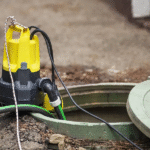 Protecting Your Skin against UV Rays with Window Tinting
Protecting Your Skin against UV Rays with Window Tinting  Why Do Gutter Maintenance and Repairs Matter So Much?
Why Do Gutter Maintenance and Repairs Matter So Much?  Battlefield’s Composite and Wood Decks Add Value to Northern Virginia Homes
Battlefield’s Composite and Wood Decks Add Value to Northern Virginia Homes  Commercial Metal Stud Framing
Commercial Metal Stud Framing  Fundamental Questions that You Must Ask a Locksmith Before Availing Services
Fundamental Questions that You Must Ask a Locksmith Before Availing Services 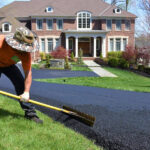 Finding the Right Driveway Paving Contractor: What Homeowners Should Know
Finding the Right Driveway Paving Contractor: What Homeowners Should Know 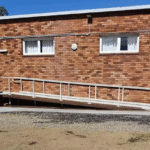 Secure Safety and Compliance by Getting a Permit for Wheelchair Ramps
Secure Safety and Compliance by Getting a Permit for Wheelchair Ramps  How Solar Energy Helps You Beat Rising Utility Costs
How Solar Energy Helps You Beat Rising Utility Costs 